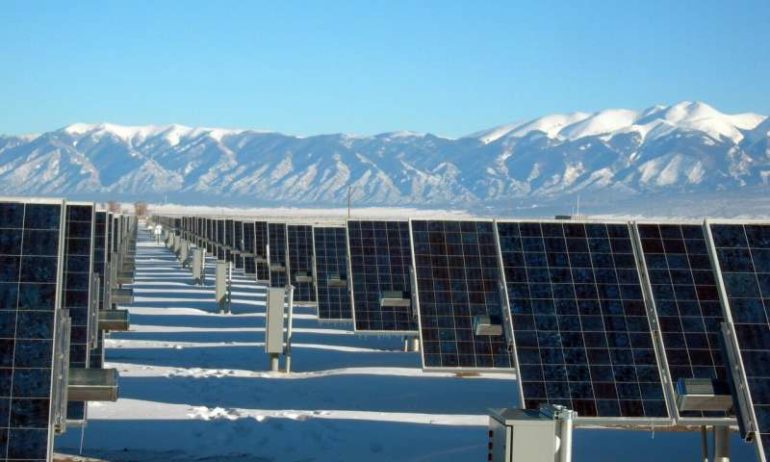Accounting for multiple social aims other than costs is critical for transitioning from fossil fuels to renewable electricity. A new study by UNIGE proposes a viable compromise.
The European Green Deal aims to drastically reduce greenhouse gas emissions in the electricity sector, which could have substantial economic and social impacts across Central European regions. Some regions might benefit more than others from new employment opportunities and from reduced air pollution, while others face threats to employment from phasing out coal and nuclear power plants. Such a transition to renewable electricity thus risks creating new regional winners and losers. In a study published in Nature Communications, scientists from the University of Geneva (UNIGE) quantify regional impacts associated with Central European electricity targets, as well as regional inequalities in costs, jobs, greenhouse gas and particulate matter emissions, and land use. The study demonstrates that a uniform and fair distribution of technologies between the 650 regions included in the analysis is possible, with an acceptable trade-off on cost increase.
The future success of reducing greenhouse gas emissions will depend on the public acceptance of available technologies, their costs, but also their impacts on society and regions. “Certain technologies are likely to impact some regions more than others. Wind turbines, for example, are preferentially located in windy regions near ocean coasts where they can generate most electricity over the year. Although wind turbines could provide new jobs in those regions, they can also degrade the landscape and negatively impact the public acceptance of new installations,” says Jan-Philipp Sasse, a doctoral student at the Institute of Environmental Sciences of the Faculty of Science at UNIGE. Central European regions vary quite significantly in terms of their ability to generate renewable electricity, as well as costs. A focus solely on cost efficiency can therefore lead to inequalities between regions. Conversely, setting only social objectives would make electricity less affordable.
Focus on regions
In order to find the right compromise, the UNIGE’s research group on renewable energy systems has modeled 100 technically and economically feasible scenarios that could achieve the Central European electricity sector targets by 2035. From these scenarios, the researchers highlight trade-offs in the aims of cost-efficiency, renewable electricity, and regional equality.
To address the regional aspects, a very high spatial resolution has been taken into account. “The size of regions included in the study is the equivalent of a Swiss canton. This is the largest modeling study that accounts for equity considerations at such high spatial detail,” says Jan-Philipp Sasse. In concrete terms, the study focuses on 650 regions in six Central European countries: Switzerland, France, Poland, Austria, Germany and Denmark. It considers all major technologies to generate electricity, such as solar, wind, biomass and hydropower, and assesses their regional impacts on costs, employment, emissions and land use. More than 100 scenarios were modeled for the study. “We selected the three most extreme scenarios to highlight trade-offs in improving different objectives,” explains Jan-Philipp Sasse.
Regional equality at affordable cost
The study shows that these three scenarios require very different implementation pathways and lead to different regional impacts. The cost-minimisation scenario encourages a spatial concentration of costs and jobs to only a few regions, and therefore encourages regional inequalities. The regional equality scenario encourages a more even distribution costs and jobs, as well as lower emissions, but would have a negative impact on land use. The scenario maximizing renewable electricity generation has the most severe impacts in terms of high costs and land use impacts. “No objective can therefore be achieved without impacting the others, and compromises must be made to make the transition,” adds the researcher. The study demonstrates that a viable compromise is possible to ensure that the costs and benefits of the renewable transition are shared evenly across regions, without favoring or prejudicing any one region. “Rising costs cannot be avoided, but might still be acceptable if environmental and social goals can be improved in an equitable way,” says Jan-Philipp Sasse.
Justice and equity
Central European countries have set up ambitious strategies and plans to reduce greenhouse gas emissions within the next 15 years. “For example,” says Jan-Philipp Sasse, “by 2035, Switzerland aims to produce roughly four times as much electricity from non-hydro-renewable energy sources as it does today. France, for its part, would like to reduce its nuclear production by 50%. That’s huge.”
Energy system models are popular tools for policy-makers to navigate the transition by quantifying the technical feasibility and cost effectiveness of green energy strategies. However, most models fail to provide a more holistic picture of the impacts and inequalities that are associated with the transition. “Politicians and decision-makers know that without equity and justice, citizens will not adhere to these objectives, which risk becoming obsolete,” he adds. This study now provides them with a powerful tool that integrates regional equality and social objectives.
Green electricity for Europe: Small scale solutions also affordable
More information:
Jan-Philipp Sasse et al. Regional impacts of electricity system transition in Central Europe until 2035, Nature Communications (2020). DOI: 10.1038/s41467-020-18812-y
Provided by
University of Geneva
Citation:
Winners and losers of energy transition (2020, October 13)
retrieved 14 October 2020
from https://techxplore.com/news/2020-10-winners-losers-energy-transition.html
This document is subject to copyright. Apart from any fair dealing for the purpose of private study or research, no
part may be reproduced without the written permission. The content is provided for information purposes only.


